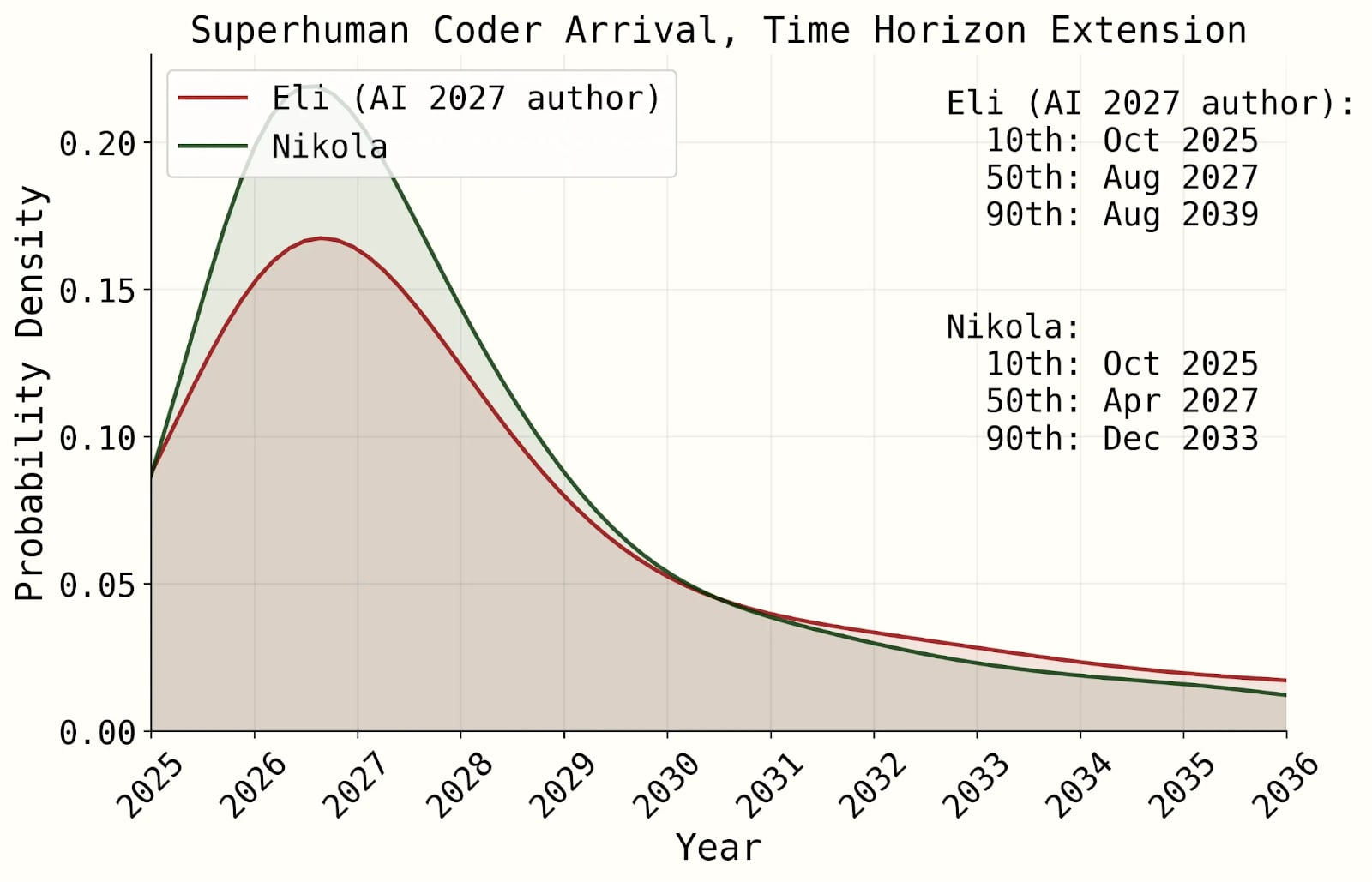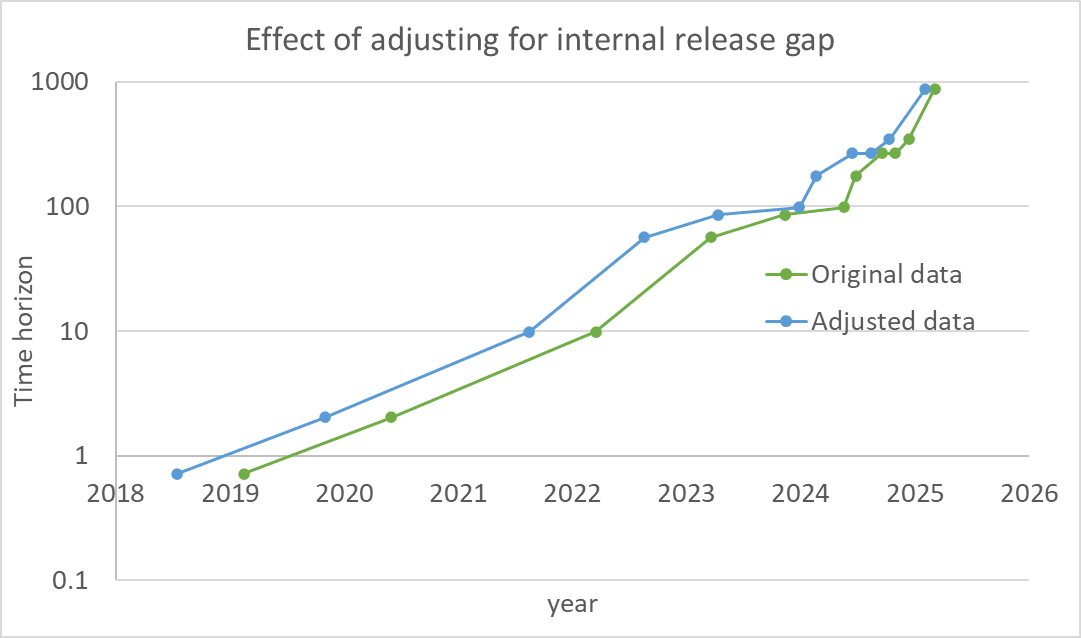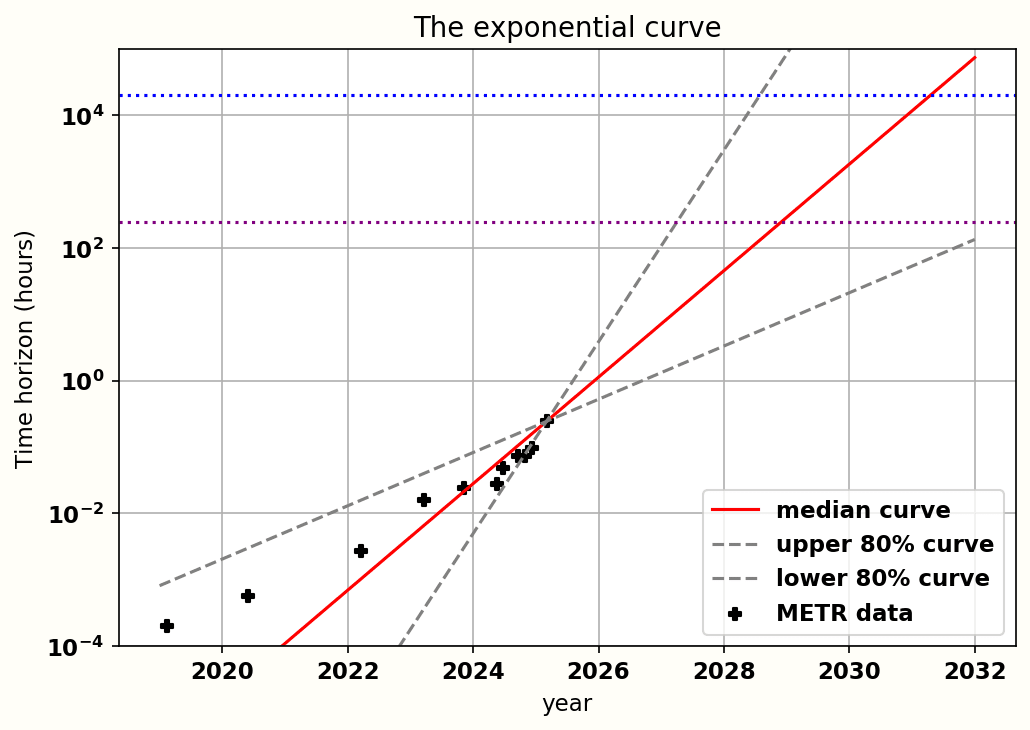Africa-focused technology, digital and innovation ecosystem insight and commentary.
…
continue reading
Content provided by LessWrong. All podcast content including episodes, graphics, and podcast descriptions are uploaded and provided directly by LessWrong or their podcast platform partner. If you believe someone is using your copyrighted work without your permission, you can follow the process outlined here https://ppacc.player.fm/legal.
Player FM - Podcast App
Go offline with the Player FM app!
Go offline with the Player FM app!
“A deep critique of AI 2027’s bad timeline models” by titotal
Manage episode 493528515 series 3364760
Content provided by LessWrong. All podcast content including episodes, graphics, and podcast descriptions are uploaded and provided directly by LessWrong or their podcast platform partner. If you believe someone is using your copyrighted work without your permission, you can follow the process outlined here https://ppacc.player.fm/legal.
Thank you to Arepo and Eli Lifland for looking over this article for errors.
I am sorry that this article is so long. Every time I thought I was done with it I ran into more issues with the model, and I wanted to be as thorough as I could. I’m not going to blame anyone for skimming parts of this article.
Note that the majority of this article was written before Eli's updated model was released (the site was updated june 8th). His new model improves on some of my objections, but the majority still stand.
Introduction:
AI 2027 is an article written by the “AI futures team”. The primary piece is a short story penned by Scott Alexander, depicting a month by month scenario of a near-future where AI becomes superintelligent in 2027,proceeding to automate the entire economy in only a year or two [...]
---
Outline:
(00:43) Introduction:
(05:19) Part 1: Time horizons extension model
(05:25) Overview of their forecast
(10:28) The exponential curve
(13:16) The superexponential curve
(19:25) Conceptual reasons:
(27:48) Intermediate speedups
(34:25) Have AI 2027 been sending out a false graph?
(39:45) Some skepticism about projection
(43:23) Part 2: Benchmarks and gaps and beyond
(43:29) The benchmark part of benchmark and gaps:
(50:01) The time horizon part of the model
(54:55) The gap model
(57:28) What about Eli's recent update?
(01:01:37) Six stories that fit the data
(01:06:56) Conclusion
The original text contained 11 footnotes which were omitted from this narration.
---
First published:
June 19th, 2025
Source:
https://www.lesswrong.com/posts/PAYfmG2aRbdb74mEp/a-deep-critique-of-ai-2027-s-bad-timeline-models
---
Narrated by TYPE III AUDIO.
---
…
continue reading
I am sorry that this article is so long. Every time I thought I was done with it I ran into more issues with the model, and I wanted to be as thorough as I could. I’m not going to blame anyone for skimming parts of this article.
Note that the majority of this article was written before Eli's updated model was released (the site was updated june 8th). His new model improves on some of my objections, but the majority still stand.
Introduction:
AI 2027 is an article written by the “AI futures team”. The primary piece is a short story penned by Scott Alexander, depicting a month by month scenario of a near-future where AI becomes superintelligent in 2027,proceeding to automate the entire economy in only a year or two [...]
---
Outline:
(00:43) Introduction:
(05:19) Part 1: Time horizons extension model
(05:25) Overview of their forecast
(10:28) The exponential curve
(13:16) The superexponential curve
(19:25) Conceptual reasons:
(27:48) Intermediate speedups
(34:25) Have AI 2027 been sending out a false graph?
(39:45) Some skepticism about projection
(43:23) Part 2: Benchmarks and gaps and beyond
(43:29) The benchmark part of benchmark and gaps:
(50:01) The time horizon part of the model
(54:55) The gap model
(57:28) What about Eli's recent update?
(01:01:37) Six stories that fit the data
(01:06:56) Conclusion
The original text contained 11 footnotes which were omitted from this narration.
---
First published:
June 19th, 2025
Source:
https://www.lesswrong.com/posts/PAYfmG2aRbdb74mEp/a-deep-critique-of-ai-2027-s-bad-timeline-models
---
Narrated by TYPE III AUDIO.
---
554 episodes
Manage episode 493528515 series 3364760
Content provided by LessWrong. All podcast content including episodes, graphics, and podcast descriptions are uploaded and provided directly by LessWrong or their podcast platform partner. If you believe someone is using your copyrighted work without your permission, you can follow the process outlined here https://ppacc.player.fm/legal.
Thank you to Arepo and Eli Lifland for looking over this article for errors.
I am sorry that this article is so long. Every time I thought I was done with it I ran into more issues with the model, and I wanted to be as thorough as I could. I’m not going to blame anyone for skimming parts of this article.
Note that the majority of this article was written before Eli's updated model was released (the site was updated june 8th). His new model improves on some of my objections, but the majority still stand.
Introduction:
AI 2027 is an article written by the “AI futures team”. The primary piece is a short story penned by Scott Alexander, depicting a month by month scenario of a near-future where AI becomes superintelligent in 2027,proceeding to automate the entire economy in only a year or two [...]
---
Outline:
(00:43) Introduction:
(05:19) Part 1: Time horizons extension model
(05:25) Overview of their forecast
(10:28) The exponential curve
(13:16) The superexponential curve
(19:25) Conceptual reasons:
(27:48) Intermediate speedups
(34:25) Have AI 2027 been sending out a false graph?
(39:45) Some skepticism about projection
(43:23) Part 2: Benchmarks and gaps and beyond
(43:29) The benchmark part of benchmark and gaps:
(50:01) The time horizon part of the model
(54:55) The gap model
(57:28) What about Eli's recent update?
(01:01:37) Six stories that fit the data
(01:06:56) Conclusion
The original text contained 11 footnotes which were omitted from this narration.
---
First published:
June 19th, 2025
Source:
https://www.lesswrong.com/posts/PAYfmG2aRbdb74mEp/a-deep-critique-of-ai-2027-s-bad-timeline-models
---
Narrated by TYPE III AUDIO.
---
…
continue reading
I am sorry that this article is so long. Every time I thought I was done with it I ran into more issues with the model, and I wanted to be as thorough as I could. I’m not going to blame anyone for skimming parts of this article.
Note that the majority of this article was written before Eli's updated model was released (the site was updated june 8th). His new model improves on some of my objections, but the majority still stand.
Introduction:
AI 2027 is an article written by the “AI futures team”. The primary piece is a short story penned by Scott Alexander, depicting a month by month scenario of a near-future where AI becomes superintelligent in 2027,proceeding to automate the entire economy in only a year or two [...]
---
Outline:
(00:43) Introduction:
(05:19) Part 1: Time horizons extension model
(05:25) Overview of their forecast
(10:28) The exponential curve
(13:16) The superexponential curve
(19:25) Conceptual reasons:
(27:48) Intermediate speedups
(34:25) Have AI 2027 been sending out a false graph?
(39:45) Some skepticism about projection
(43:23) Part 2: Benchmarks and gaps and beyond
(43:29) The benchmark part of benchmark and gaps:
(50:01) The time horizon part of the model
(54:55) The gap model
(57:28) What about Eli's recent update?
(01:01:37) Six stories that fit the data
(01:06:56) Conclusion
The original text contained 11 footnotes which were omitted from this narration.
---
First published:
June 19th, 2025
Source:
https://www.lesswrong.com/posts/PAYfmG2aRbdb74mEp/a-deep-critique-of-ai-2027-s-bad-timeline-models
---
Narrated by TYPE III AUDIO.
---
554 episodes
All episodes
×Welcome to Player FM!
Player FM is scanning the web for high-quality podcasts for you to enjoy right now. It's the best podcast app and works on Android, iPhone, and the web. Signup to sync subscriptions across devices.








